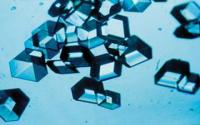Marine Biotechnology

Quicktabs: Keywords

The author looks at the economic and scientific prospects of mining the ocean's vast genetic resources, but cautions that the U.S. is ill-prepared to take part in either of them as a non-signatory to both UNCLOS and the Convention to Protect Biological Diversity.
[ More ]The European Union has tried to bridge the gap between developed and developing countries by proposing that a new Implementing Agreement be developed to address the marine environment more broadly. The EU would like to see such an agreement treat the issue within a broader context of the sustainable use of all marine resources and alongside ventures such as carbon sequestration, ocean fertilization, and the mitigation of ocean noise and pollution. The EU proposal is pragmatic in that it seeks to avoid the ideological question related to the legal status ofmarine genetic resources, namely, whether they are part of the "common heritage," and instead focuses on the governance questions of how they can be used sustainably and how their benefits can be shared equitably. The United States continues to sit on the sidelines of these negotiations with the untenable view that patenting deep sea organisms is simply part of the customary freedom of the high seas. The United States will not be successful in imposing a unilateral view and will likely have to accommodate the concerns of developing countries and approach the issue within the broader context of sustainable use that the European Union has identified. It must either re-engage on this issue, or else be left behind.
The deep seas are also opening up as a new frontier for genetic research. Research institutions, as well as the pharmaceutical, health care, cosmetics, and agricultural industries, are increasingly interested in the biodiversity associated with mineral-rich, deep sea, warm hydrothermal vents, and cold-seeps, which were only discovered as the Conference drew to a close. At least several hundred patents have now been issued by the United States, the European Union, Japan, and other developed countries for organisms, products, and processes originating in the deep. Many developing countries, however, object to the patentability of deep sea materials, on the basis that it runs afoul of the spirit of the "common heritage of mankind" and of the provisions of UNCLOS prohibiting using marine scientific research to appropriate marine resources or "any part" of the seabed.17 The Convention recognizes the fundamental truth that "the problems of ocean space are closely interrelated and must be addressed as a whole." Without consensus on the legal structure governing these genetic resources, patent holders cannot enjoy the protections necessary in the global marketplace to spur continued investment in genetic resources.
In this context, marine species and microorganisms that have evolved to exist in extreme environments, so-called "extremophiles," are of particular interest. Such environments and habitats include the deep sea, as well as in the vicinity of seamounts, hydrothermal vents, methane seeps. Such features have been discovered on the extended continental shelf. Organisms living here have adapted to survive in the complete absence of light, in conditions of extremely high pressure, in either low or very high (for example in the vicinity of a hot water vent) temperatures, or in environments characterised by extreme salinity or acidity.
This has led to the emergence of "bioprospecting" and the deep seabed, including outer continental shelf areas, are likely to be a focus for these activities. This represents a potentially rich resource and opportunity for coastal states. Indeed, marine biotechnology-related products were estimated to be worth $100 billion (USD) in the year 2000 alone.86 The potential for further growth in marine bioprospecting is emphasised by the fact that around 1,000 new marine natural products are reported annually. This points to how biodiversity-rich yet under-explored and thus little known the oceans are. Indeed, it has been suggested that the oceans are ninety-five percent unexplored." Moreover, the number of ocean-dwelling species has been estimated at around ten million-a figure fifty times greater than the number of marine species reported thus far. In this context, deepwater areas hold particular promise as they are likely to host unique extremophiles and also because these areas are least explored, notwithstanding considerable advances in technologies applicable to exploring deep sea areas made in recent decades. This is illustrated by the fact that of over 30,000 marine natural products reported since the 1960s, less than two percent derive from the deep sea organisms.89
There is considerable debate currently on how UNCLOS can govern marine genetic resources and without consensus, patent holders cannot enjoy the protections necessary in the global marketplace to spur continued investment in genetic resources. The U.S., as a non-party to UNCLOS, lacks standings to contribute to or lead these debates and puts its own marine biotechnology industry at a disadvantage as a result.
